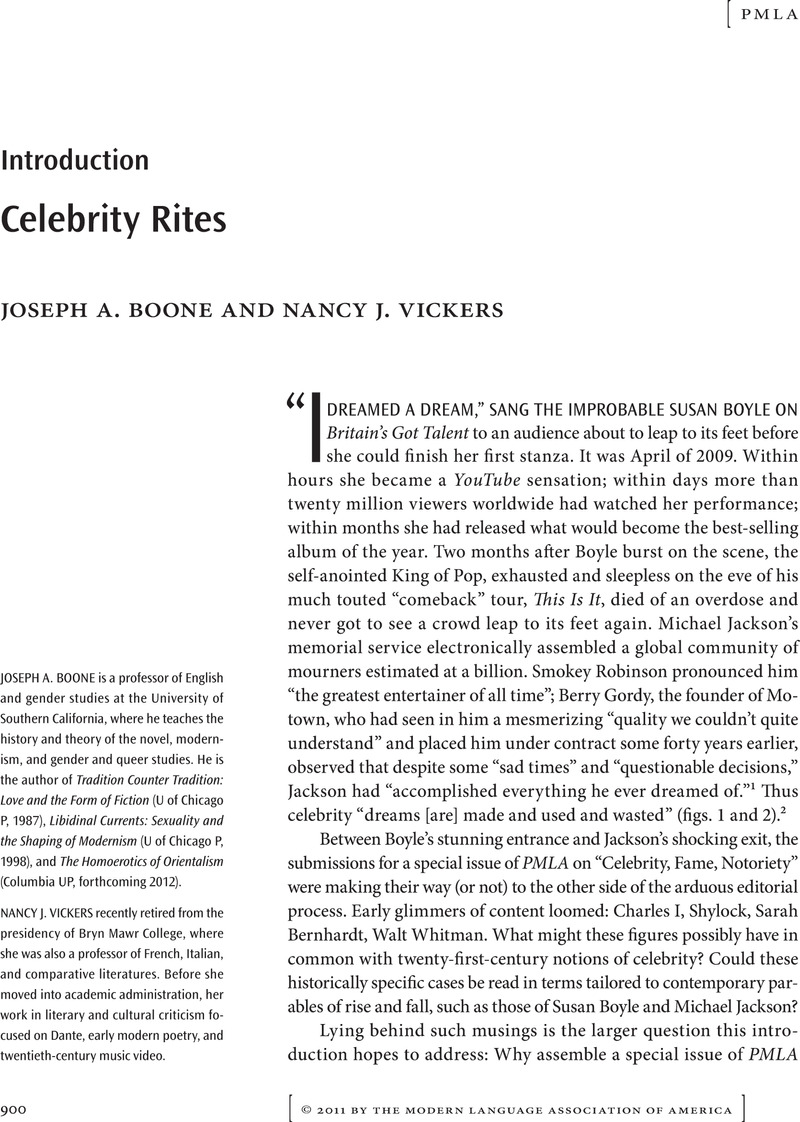Crossref Citations
This article has been cited by the following publications. This list is generated based on data provided by Crossref.
Ohlsson, Anders
Forslid, Torbjörn
and
Steiner, Ann
2014.
Literary celebrity reconsidered.
Celebrity Studies,
Vol. 5,
Issue. 1-2,
p.
32.
Hutcheon, Linda
and
Hutcheon, Michael
2014.
The Inward Turn: American Opera Revisits America’s Past.
Canadian Review of American Studies,
Vol. 44,
Issue. 2,
p.
178.
Port, Cynthia
2015.
Celebrity and the Epistolary Afterlife in Edith Wharton's Early Fiction.
Edith Wharton Review,
Vol. 31,
Issue. 1-2,
p.
3.
Port, Cynthia
2015.
Celebrity and the Epistolary Afterlife in Edith Wharton's Early Fiction.
Edith Wharton Review,
Vol. 31,
Issue. 1-2,
p.
3.
Elliott, Kamilla
2016.
The celebrity of anonymity and the anonymity of celebrity: picture identification and nineteenth-century British authorship.
Celebrity Studies,
Vol. 7,
Issue. 4,
p.
526.
Wilson, Nicole L.
2016.
The World Will Be Watching: The Panoptic Nature of Reality Television in Young Adult Fiction.
The Journal of Popular Culture,
Vol. 49,
Issue. 4,
p.
917.
Loxley, James
2016.
‘Public feasts’: Ben Jonson as literary celebrity.
Celebrity Studies,
Vol. 7,
Issue. 4,
p.
561.
Hillman, Susanne
2016.
Empty-handed beauty: Juliette Récamier as pseudo-event.
Celebrity Studies,
Vol. 7,
Issue. 2,
p.
203.
Curry, Ruth Martin
2018.
Achilles and the Astronaut: What Heroism Humanities Can Teach Heroism Science.
Journal of Humanistic Psychology,
Vol. 58,
Issue. 5,
p.
571.



